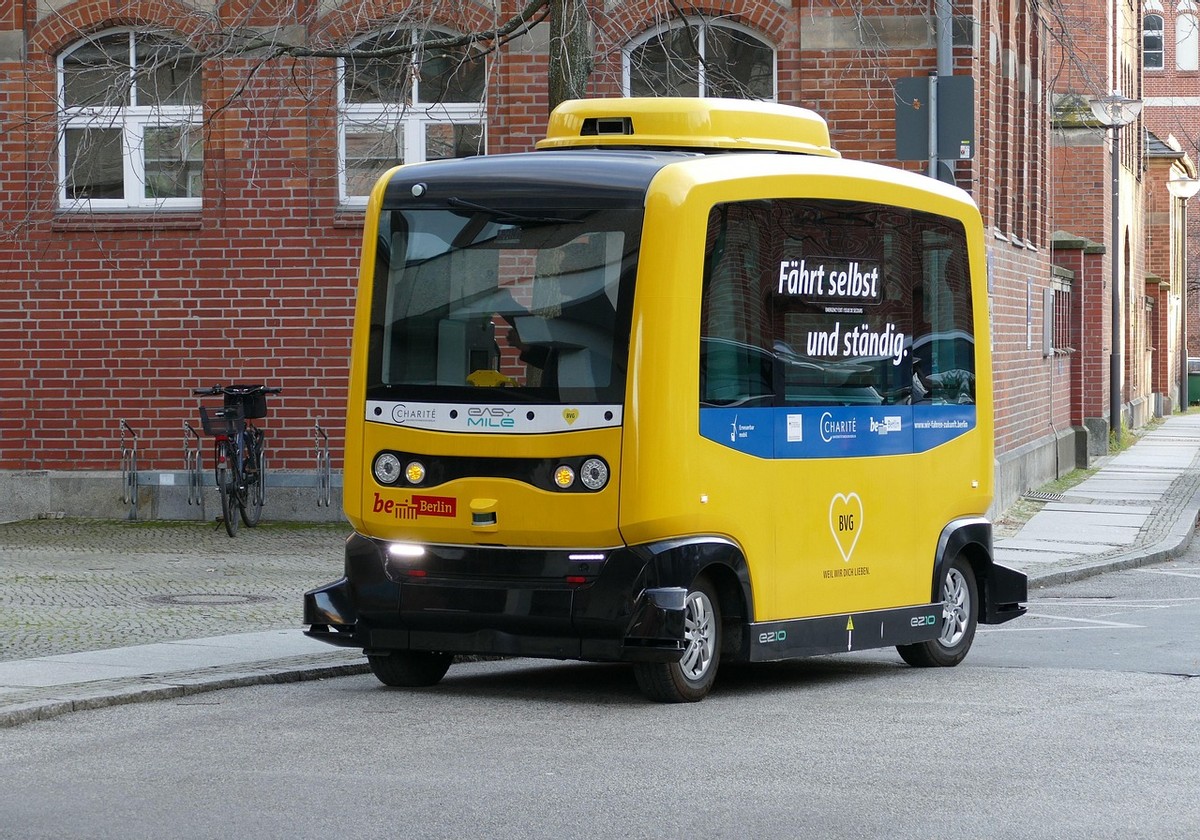From 99% to 99.99%: Are Robotaxis Crossing the 'Last Mile'?
![]() 05/15 2025
05/15 2025
![]() 417
417
2025 is poised to be a pivotal year for the deep integration of autonomous driving and artificial intelligence, marking an era of explosive growth.
Tesla recently announced its plan to launch "fully unsupervised" Robotaxi services in Austin, Texas, in June 2025, with ambitions to mass-produce the steering wheel-free CyberCab by 2026. Additionally, Musk's AI venture, xAI, secured a $6 billion funding round to build a supercomputing factory, aiming to propel Tesla's autonomous driving technology forward.
Global ride-hailing giants Uber and Lyft are accelerating their autonomous driving commercialization efforts through partnerships with Waymo and Mobileye. Both companies reported significant progress in their autonomous driving businesses in their recent first-quarter earnings. Chinese players Pony.ai and WeRide are also making strides, expanding their Robotaxi services to the Middle East and European markets in collaboration with Uber.

Image source: pixabay library
Amidst the fervor of technology and capital, the convergence of Robotaxi and AI has emerged as a key battleground for the new energy vehicle industry, with a global race for a trillion-dollar market already underway.
The technological race is heating up, with competitors vying for AI computing power and data closed-loop advantages.
Tesla, a major player in the Robotaxi market, has forged a "software and hardware encirclement" with xAI. Its core competitiveness stems from the data accumulation and AI computing power supporting its Full Self-Driving (FSD) system. The FSD V12 version reportedly achieves "anthropomorphic" driving decisions through end-to-end neural network technology, capable of handling complex scenarios like construction zones and animal crossings.
Tesla's FSD has accumulated over 1.6 billion miles of driving data. Post the launch of FSD V13 in October, the necessary takeover mileage is expected to increase sixfold. By the first quarter of 2025, FSD is anticipated to gradually roll out in Europe and China, subject to regulatory approval. Musk emphasized that technology sharing between xAI and Tesla will shorten the FSD iteration cycle, ushering in a "ChatGPT moment" for Robotaxis – a leap in technological maturity.
Moreover, xAI will assist in developing other Tesla features, including a Siri-like voice assistant for electric vehicles and software for its humanoid robot Optimus.
Global technological paths continue to diverge, with two main factions: the cost faction and the ecosystem faction.
In the U.S., Waymo, leveraging the Google ecosystem, has achieved 150,000 autonomous trips per week in San Francisco, Los Angeles, and other locations, extending to high-value scenarios like airports.
Chinese players are seizing market share through cost advantages. Pony.ai's seventh-generation system further reduces hardware costs per vehicle, with the onboard computing unit cost dropping by 80% and LiDAR cost by 68%. WeRide, on the other hand, successfully launched the largest commercial Robotaxi fleet in the Middle East with an operational license across the UAE, boasting over 1,700 days of commercial operation to date.
Behind the accelerated layout of global players, Robotaxi-related funding has surged. As of November 2024, Waymo's valuation exceeded $45 billion, while Uber's share price rose by 46.05% (as of May 13) due to its autonomous driving collaborations.
According to McKinsey consulting reports and research data from CICC, the global market space for Robotaxi services in 2030 will exceed $2 trillion.
Technological breakthroughs and capital surges are forging new moats for the Robotaxi industry. Tesla is edging closer to the critical point of "full-scenario generalization" with its 1.6 billion miles of FSD data closed-loop and the computing power support of xAI. Players like Waymo and Pony.ai are accelerating technology commercialization through ecosystem integration and cost revolution.
Perhaps behind this capital frenzy, the blueprint for "AI + mobility" is taking shape.
The business model is undergoing a transformation, shifting from "hardware sales" to "ecosystem services." As autonomous driving technology transitions from laboratories to real road networks and capital bets shift from "possibility" to "profitability," the traditional automotive industry's hardware-centric business model is being disrupted by an "ecosystem model driven by data and value-added services."
The core logic of this revolution is that vehicles are no longer terminal consumer goods but intelligent nodes that can be connected, scheduled, and generate revenue. This extends automakers' battlefield from factory assembly lines to every link in the mobility ecosystem.
Specifically, this manifests in Tesla's "sharing economy + subscription model." Musk has stated that Robotaxis will fundamentally transform Tesla's revenue structure, allowing car owners to connect their idle vehicles to the "Tesla Network" for income, significantly increasing vehicle utilization and subscription service revenue.

Tesla Robotaxi
Tesla's FSD subscription model, a pioneering concept, has opened new avenues for many automakers. If the "sharing + subscription" model succeeds, it will further disrupt traditional automakers' profit logic reliant on hardware sales.
Uber and Lyft employ an asset-light platform strategy. Uber mitigates the high cost of building its own fleet by integrating third-party technologies like Waymo and Pony.ai.
Their cooperation models include revenue sharing (with Waymo) and vehicle procurement (BYD plans to deploy 100,000 Robotaxis). Uber's over 130 million monthly active users worldwide provide massive landing scenarios for autonomous driving enterprises.
Lyft, in partnership with Mobileye and Itochu, plans to launch an autonomous taxi (Robotaxi) service in Dallas, Texas, in 2026. Itochu will own the Robotaxi fleet, while Mobileye will provide autonomous driving technology. Lyft will connect these autonomous taxis to its ride-hailing platform and support through its subsidiary FlexDrive's fleet management experience.
Chinese enterprises are making breakthroughs with "technology going global + localized operations." Pony.ai and WeRide use the Middle East as a springboard to enter policy-open markets like the UAE and Dubai, leveraging the Uber platform.
Saudi Arabia's "Vision 2030" and the UAE's "D33 Plan" offer test licenses and financial support, enabling Chinese automakers to expand rapidly with Robotaxi retrofit costs of $200,000-$300,000.
It's evident that as Tesla reconstructs the vehicle value chain with "sharing + subscription," Uber/Lyft lowers the technology implementation threshold through platform strategies, and Chinese enterprises breach regional barriers with "going global + localization," the competitive logic of the autonomous driving industry has fundamentally shifted – from a single technology race to a multi-dimensional game of "ecosystem synergy + scenario penetration."
Under the triple game of policy, technology, and globalization, where lie China's opportunities?
Currently, Tesla's Robotaxi network aims to transform every car into a "mobile asset," Uber's integration of third-party technologies highlights the platform's industrial chain dominance, and Chinese enterprises' global layout reveals the combined effect of policy dividends and cost advantages.
However, unproven profit models (like Tesla's Robotaxi still in the pilot stage), long-tail technical issues (extreme scenario handling capabilities), and geopolitical policy risks (cross-border data regulation) remain core challenges.
Future industry competition will revolve around "compliance, technological maturity, and global resource allocation," forming a more intricate web of competition and cooperation.
China, with its policy pioneering, localized technological innovation, and global roundabout layout, is building a unique competitive edge. Despite facing long-tail technical challenges and geopolitical risks, China's strategic opportunities in the following areas have become clear.
With global market regulation differentiation, the "elastic band" effect of China, the United States, and Europe not only gives the market a breather but also faces more complex changes.
Texas' lax regulation has made it a testing ground for Tesla's Robotaxi, allowing vehicles to be road-ready with just registration and insurance. California has delayed Waymo's expansion due to stringent safety reviews, while Europe lags in commercialization due to data privacy and employment protection controversies.

Image source: pixabay library
In contrast, China is paving the way for autonomous driving commercialization through local legislation trials. Regulations for L3-level autonomous driving implemented in Beijing, Wuhan, and other cities in 2025 gradually incorporate "personal passenger car travel" into legal application scenarios, marking a shift in policy focus from "test supervision" to "scaled application."
In the long run, China can further ignite enterprises' enthusiasm for vehicle-road collaboration construction through policy combinations (like tax incentives and road priority), while promoting L4 legislation breakthroughs and seizing the right to speak in global standard setting.
On the technological front, Chinese enterprises' cost advantages and the "China solution" are achieving a two-way breakthrough. Pony.ai's seventh-generation system further reduces hardware costs per vehicle, showcasing domestic enterprises' execution at the cost level.
In localized innovation, Huawei's ADS 3.0 surpasses pure vision solutions in complex intersection efficiency through vehicle-road collaboration. Baidu Apollo has achieved Robotaxi trial operations in 10 first-tier cities nationwide, relying on high-precision maps and roadside sensing equipment.
Moreover, the technological dimension's qualification threshold has risen from "99% to 99.99%." While Tesla's FSD excels in conventional scenarios, issues in test data submitted to California triggered regulatory doubts.
In comparison, Chinese local enterprises can lead in realizing large-scale Robotaxi commercial use and exporting "Chinese autonomous driving solutions" to Southeast Asia and the Middle East by integrating "low-cost hardware + vehicle-road collaboration + data closed-loop."
In global layout, Chinese automakers use the Middle East as a strategic fulcrum to circumvent European and American technical barriers. Geely's Zeekr has also partnered with Baidu Apollo, planning to launch Robotaxis in 2026-2027, aiming to challenge Tesla with the "China solution." BAIC BJEV has signed a contract with Pony.ai, planning to deploy thousands of unmanned vehicle fleets in Beijing within three years, forming a "city-level demonstration project."
Especially in industrial synergy, Chinese enterprises have formed an independent supply chain in key areas like LiDAR, high-precision maps, and automotive-grade chips (Huawei Ascend chips, RoboSense LiDAR), effectively weakening Tesla's global procurement advantages. Additionally, many local enterprises have reached cooperation with Middle Eastern automakers, fostering a two-way benefit of "technology export + hardware export."
Leveraging the open policy window in the Middle East, Chinese enterprises can build a global network of "regional operation centers + technical standard exports" while circumventing European and American data sovereignty disputes.
Conclusion
As policymakers attempt to constrain technology with "safety," technology enterprises grapple with the cost-experience balance, and automakers vacillate between "car manufacturing" and "mobility services" – the ultimate outcome of the autonomous driving industry may not hinge on a company's single-point advantage but on its ability to construct a triangular stable structure that is "policy-compatible, technologically reliable, and commercially sustainable."
There is no definitive answer to this game, but every policy easing, every line of code optimization, and every city pilot contribute to shaping the mobility landscape of the new era.
Source: US Stock Research Institute








